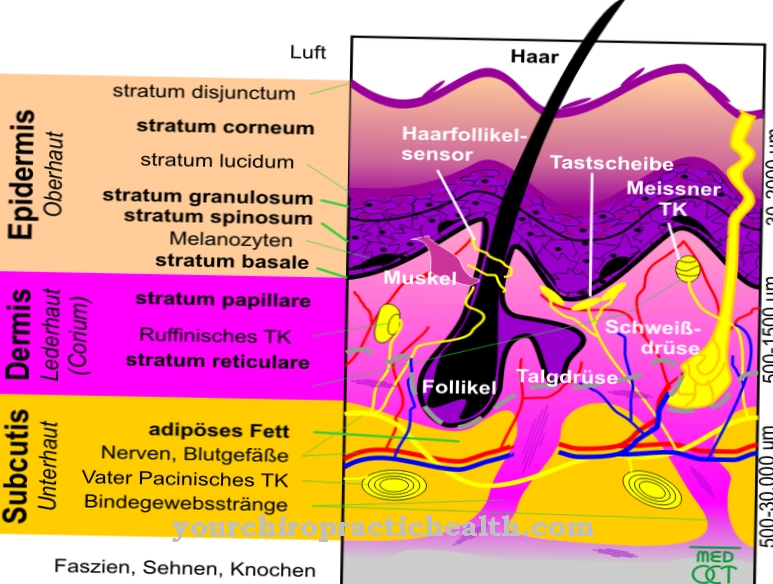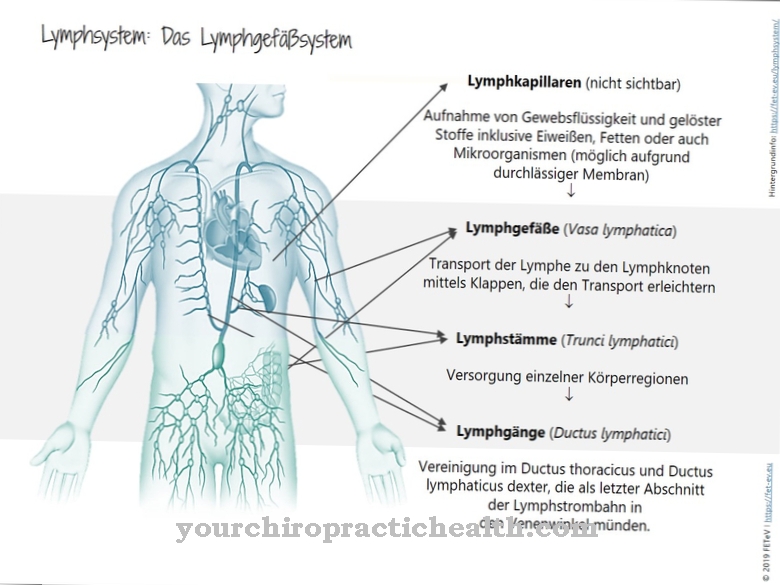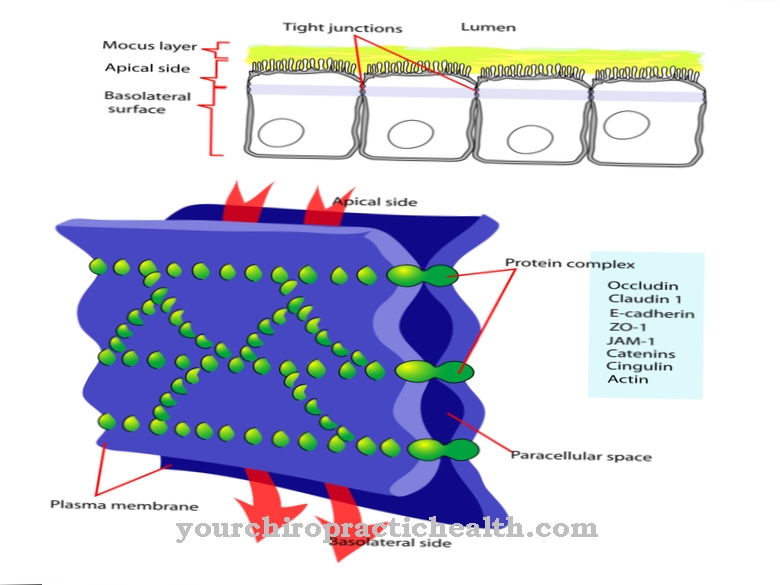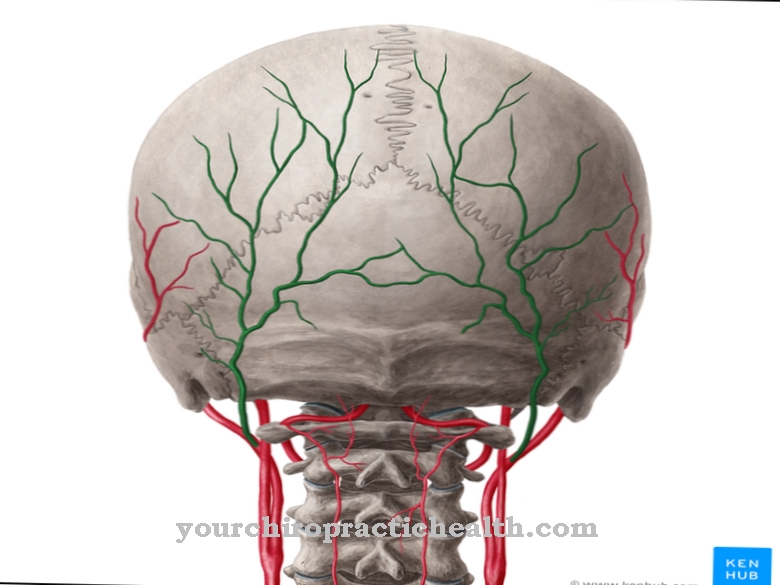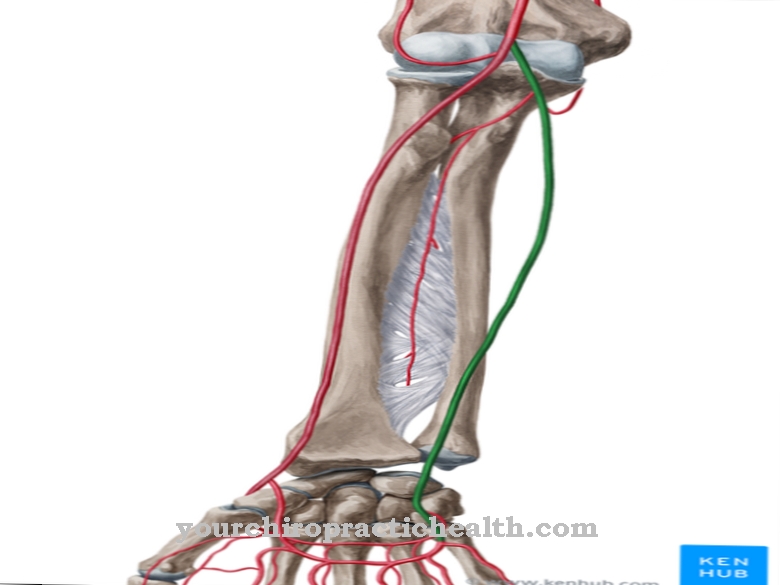The term hull is often synonymous with the terms tribe or Body trunk utilized. It refers to the central part of the human body without the extremities, the neck and the head.
What is the trunk?
"Body" is a technical term from the field of anatomy. It denotes the central section of the human body. Legs, arms, head and neck do not belong to the trunk.
The fuselage is also called torso designated. It can be divided into four different sections. The lowest part of the trunk is the pelvis. Above it lie the stomach (abdomen) and back (dorsum). The chest (thorax) and the chest (pectus) also belong to the trunk.
Anatomy & structure
The lower part of the torso is the pelvis. It lies below the abdomen and above the legs. In humans, a distinction can be made between a large and a small pelvis. Strictly speaking, the large pelvis already belongs to the abdomen.
The pelvis consists of the pelvic organs and the bony pelvis. This in turn is formed from the two hip bones (ossa coxae). The hip bones each consist of the iliac bone, ischium and pubic bone. The area between the chest and pelvis is called the abdomen. The upper limit of the abdomen is approximately at the level of the tip of the breastbone, the abdomen ends at the inguinal ligament. The cavity within the abdomen is called the abdominal cavity or abdominal cavity. The upper part of the abdomen is bounded by the diaphragm. The lower limit is the hip bone and the pelvic floor. The abdominal cavity is lined with peritoneum and contains the abdominal organs.
The back is the back part of the trunk. It extends from the lower part of the neck to the loin or tailbone. The spine, the back of the ribs and soft tissues such as connective tissue and back muscles make up the back.
The rib cage is formed by the thoracic spine, sternum and ribs. The chest cavity lies within the rib cage. Due to the dome shape of the diaphragm, part of the abdominal cavity also protrudes into the chest. The respiratory muscles are attached to the outside and inside of the thorax.
Function & tasks
First and foremost, the torso with its skeleton and muscles provides stability. It is only thanks to the bones and muscles in the trunk that people can walk and stand upright at all. In addition, the trunk houses almost all of the body's important organs.
Only the brain is outside the trunk. In the abdomen are the stomach, small intestine, large intestine, spleen, pancreas, and liver. These organs are mainly used for digestion. The liver is also the most important metabolic organ in the body. It plays an important role in processing nutrients and in detoxifying the body. The kidneys are also part of the abdominal organs. They filter the blood and ensure that metabolic end products are eliminated. They are also responsible for regulating blood pressure and water retention.
The heart and lungs are located in the thorax. The heart supplies blood to the entire body. Oxygen is added to the blood in the lungs. Here, carbon dioxide is removed from the blood and exhaled. In the area of the pelvis are the bladder, the urinary tract and the genital organs. The urine is eliminated from the kidneys via the bladder and the urinary tract. The sexual organs are primarily used for reproduction.
You can find your medication here
➔ Medication for chest painDiseases
In view of the many structures that the trunk comprises, it quickly becomes clear that numerous diseases can arise in this area. Muscular dystrophies, for example, almost exclusively affect the core muscles.
Muscular dystrophies are a group of muscle diseases that are associated with muscle weakness and muscle wasting. They are usually inherited and are chronically progressive. There are a number of diseases in the abdomen. An acute abdomen can result from appendicitis, gallstones, kidney stones, or diverticulitis. The acute abdomen is characterized by sudden severe abdominal pain.
Of course, numerous tumor diseases can also occur in the abdomen. The most common tumors are located in the stomach, large intestine, liver or pancreas. Chest disorders can affect the lungs or heart. An inflamed lung is called pneumonia. Other acute lung diseases are bronchopneumonia or acute bronchitis. Chronic lung diseases include COPD (Chronic Obstructive Lung Disease), bronchial asthma, emphysema, pulmonary fibrosis and diffuse idiopathic pulmonary cell hyperplasia (DIPNECH).
A malignant neoplasm that originates in the cells of the bronchi is called bronchial carcinoma or lung cancer. Lung carcinoma is the most common fatal type of cancer in Germany. The main risk factor is smoking. The heart can also become sick. Coronary heart disease (CHD) is a chronic disease of the heart.
It is caused by arteriosclerosis in the coronary arteries and can lead to a heart attack. In a heart attack, tissue deterioration occurs due to insufficient blood flow. If the heart can no longer provide enough blood to the body, it is called heart failure. This can be divided into left heart failure, right heart failure and global insufficiency.
With carditis, the heart is inflamed. Myocarditis affects the muscle layer of the heart. With endocarditis, the inner lining of the heart becomes inflamed, with pericarditis, the pericardium becomes inflamed. Inflammation of the pelvic organs is often caused by bacteria. It is not uncommon for these to be transmitted through sexual intercourse.


